In 2003 and 2004, the University of Arizona conducted an inventory of reptiles and amphibians (herpetofauna) in six National Park Service Chihuahuan Desert Network parks. Primary objectives of this inventory were to document reptile and amphibian species, map the distribution of all species found, and determine a rough relative abundance for each species.
-
Amistad National Recreation Area
Article 1: Amistad National Recreation Area Reptile and Amphibian Inventory
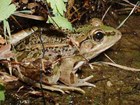
Three major rivers (Pecos River, Devils River, and the Rio Grande) and the Amistad Reservoir occur in Amistad National Recreation Area (NRA). These diverse terrestrial and aquatic systems contribute to Amistad NRA’s high level of biodiversity. Searches for reptiles and amphibians were primarily focused along the eastern shore of the reservoir. Read more
-
Big Bend National Park
Article 2: Big Bend National Park Reptile and Amphibian Inventory
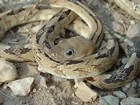
The reptiles and amphibians of many of the most diverse areas of the park were already well known, so this inventory focused primarily on three mountain ranges that were not previously surveyed: the Sierra Quemada south of the Chisos Mountains, the Sierra del Caballo Muerto on the eastern edge of the park, and the Mesa de Anguila in the southwestern corner of the park. Read more
-
Carlsbad Caverns National Park
Article 3: Carlsbad Caverns National Park Reptile and Amphibian Inventory
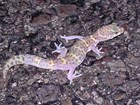
Few permanent sources of water are present in the park. Rattlesnake Springs, a detached unit of Carlsbad Caverns NP, is a rare wooded riparian area. Surveys were completed in Rattlesnake Springs, the park's sewage disposal area, and canyons and drainages throughout the park. Read more
-
Fort Davis National Historic Site
Article 4: Fort Davis National Historic Site Reptile and Amphibian Inventory
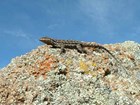
Fort Davis NHS is located in the highly diverse Davis Mountains and is small enough that the researchers and a park partner were able to survey most of the site. The majority of the search was focused on Hospital Canyon, the flats surrounding and north of the fort ruins, and the trail system. Read more
-
Guadalupe Mountains National Park
Article 5: Guadalupe Mountains National Park Reptile and Amphibian Inventory
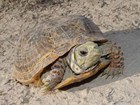
Guadalupe Mountains NP includes the highest point in Texas (8,749 ft.), reliable springs, sand dunes, and forests. This inventory focused primarily on McKittrick Canyon, a very diverse riparian area, and the Salt Basin Dunes area, characterized by creosote flats, gypsum and quartz dunes. Read more
-
White Sands National Park
Article 6: White Sands National Monument Reptile and Amphibian Inventory
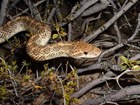
White Sands NM is located in south central New Mexico in the Tularosa Basin of the Chihuahuan Desert and is part of the largest white gypsum dune field in the world. While most of the park consists of gypsum sand dunes, there is an area of desert scrub and a large playa present on the western side of the park. The reptile and amphibian inventory took place in 2003 and 2004. Read more
-
Article 7: Literature Cited and Project Contacts
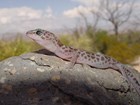
Literature and project contacts for the Chihuahuan Desert Network Reptile and Amphibian Inventory. Read more
